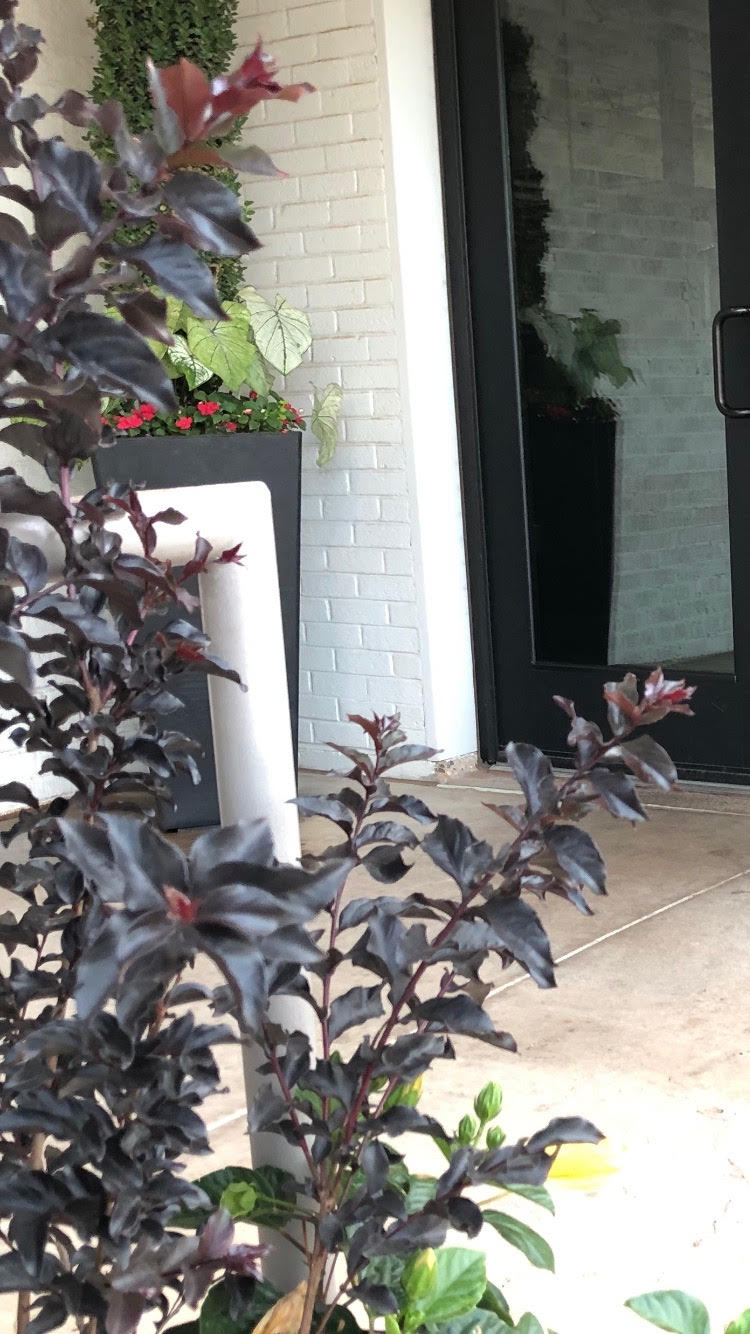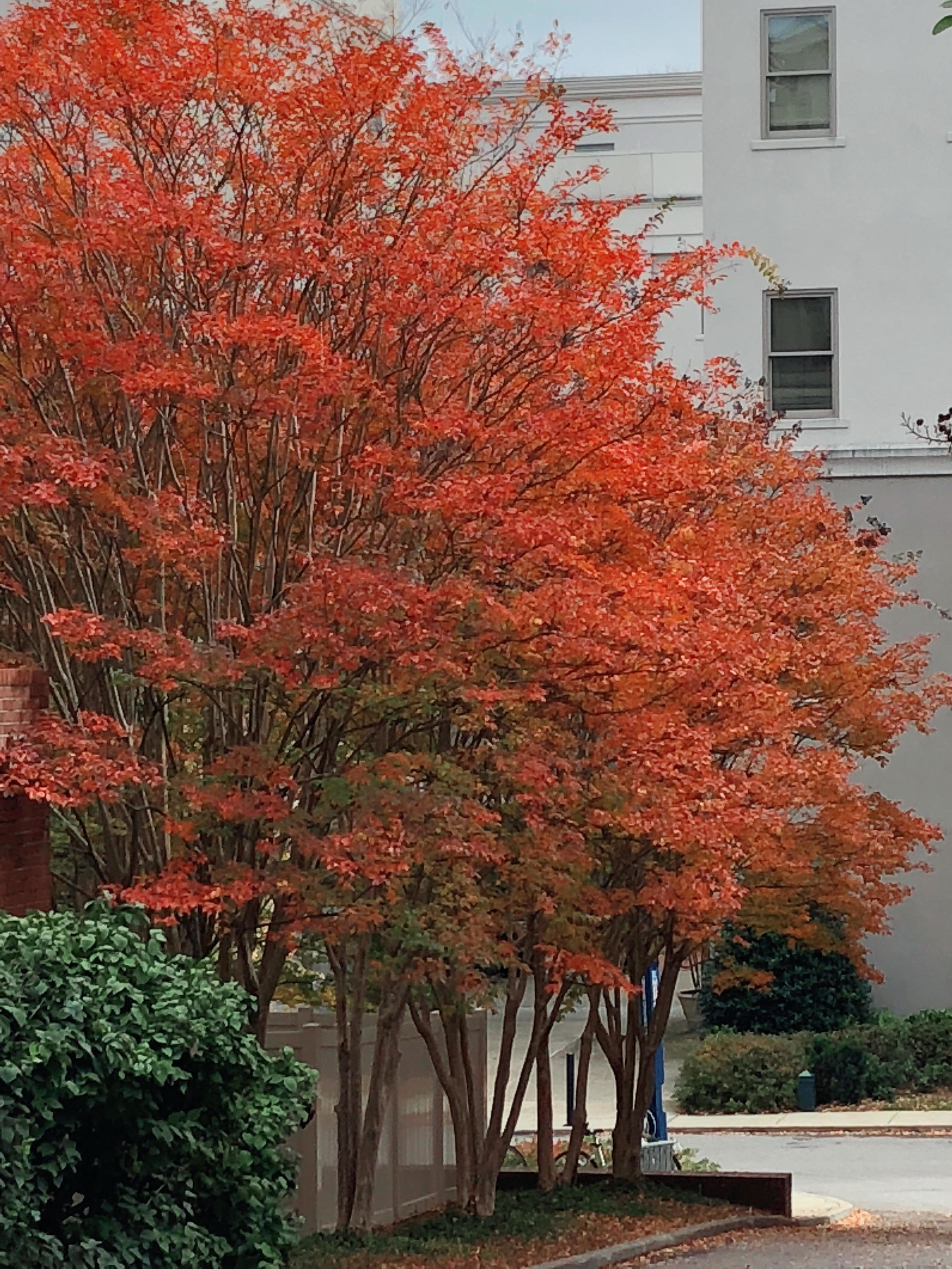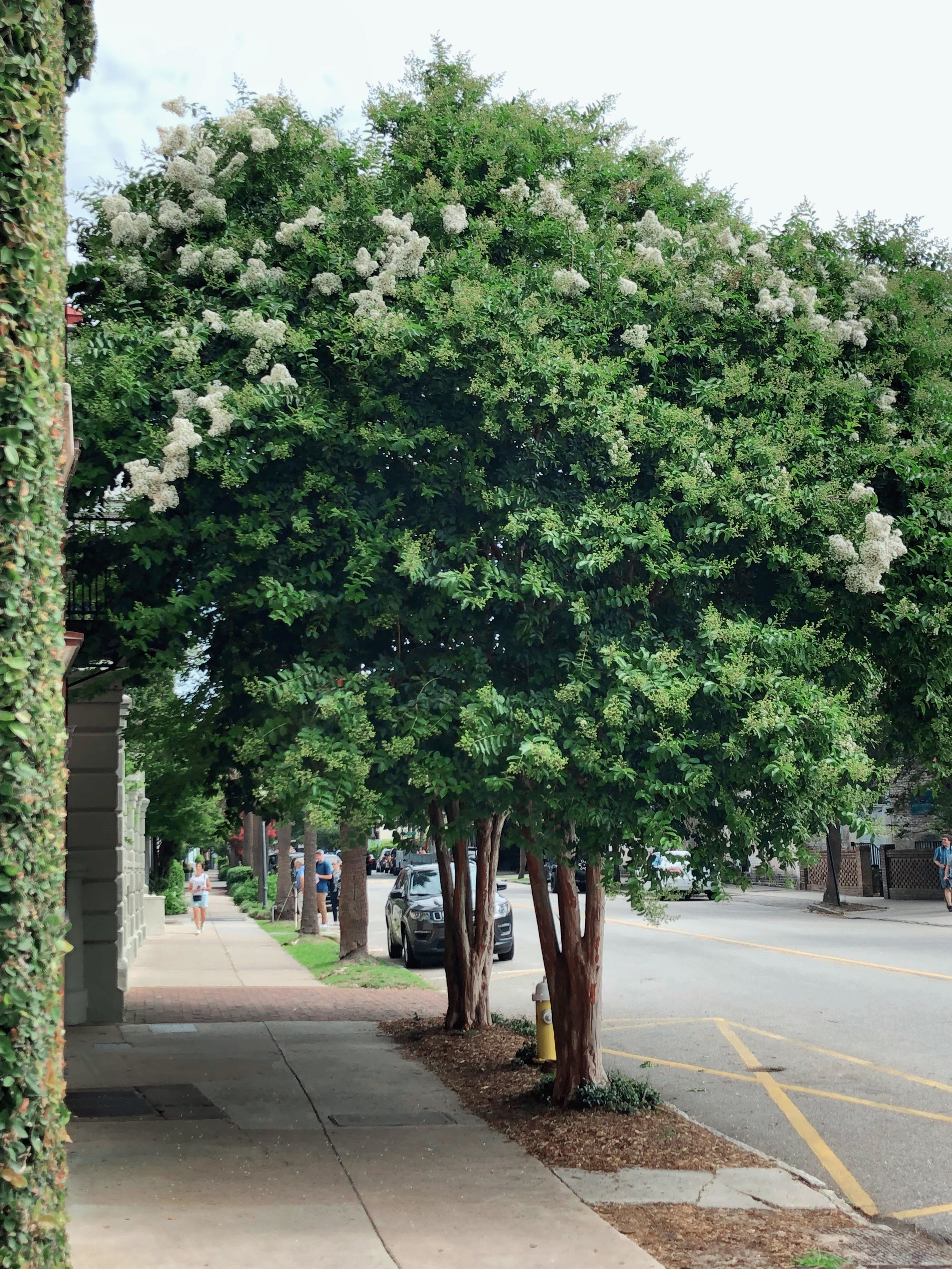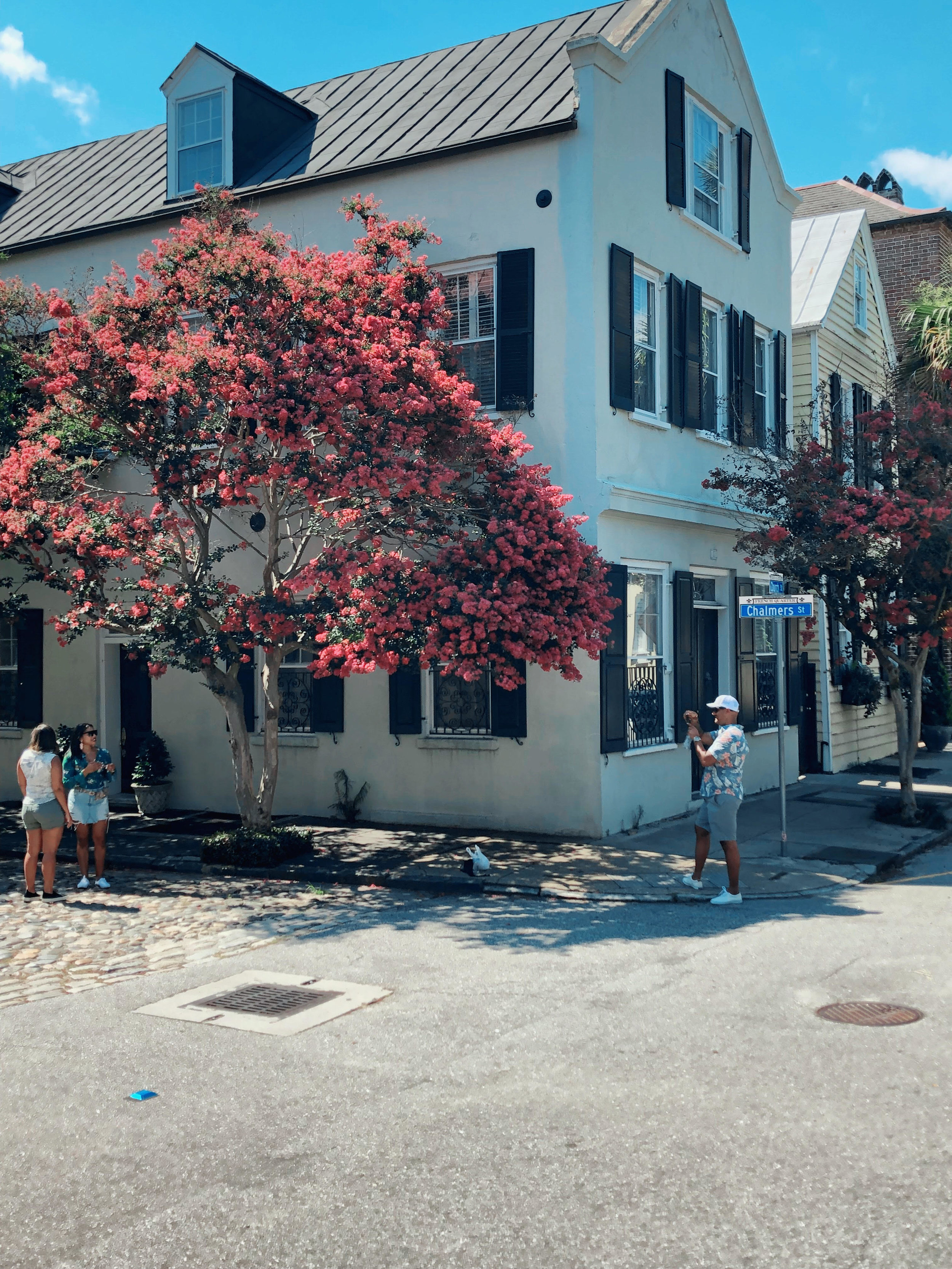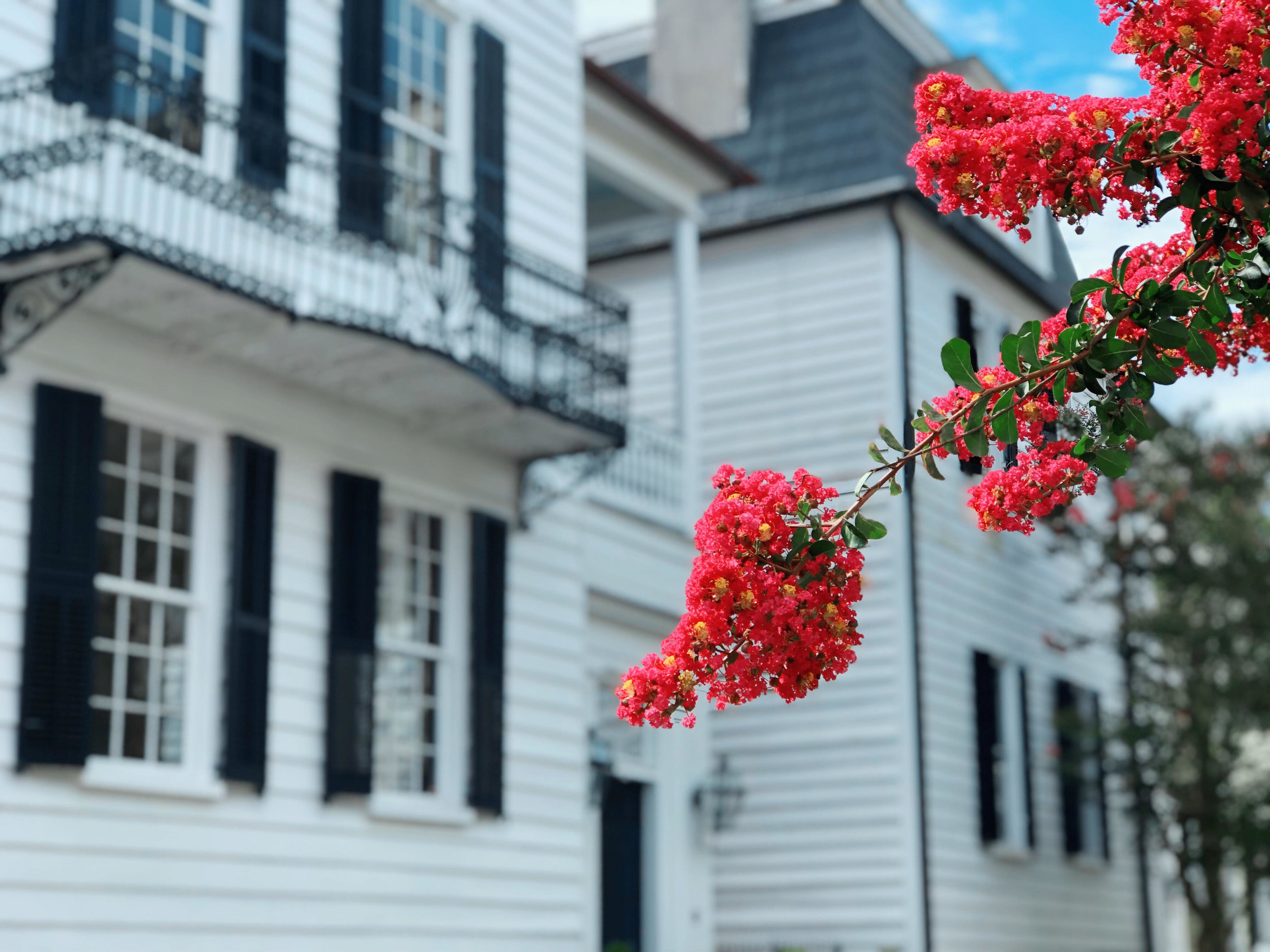Crape Myrtle - Summer's Biggest Show!
This week marked the longest day of the year, the first day of summer, and the start of Crape Myrtle season.
Most blooming trees and shrubs last for only a few days or a couple of weeks. But the crape myrtle holds the distinction of being our longest blooming shrub or tree. Typically, the crape myrtle starts adding color to the landscape in mid-June and doesn’t stop until the first frost. This year, due to the cooler than normal start to the summer, the crape myrtle hasn’t started to put on their summer show yet but will in the next couple of weeks.
This past week, I was fortunate to spend a few days in Charleston, South Carolina, the first place the French planted crape myrtles in the United States. One of our favorite activities of the week was a morning walk through Charleston’s crape myrtle lined streets.
There are over 50 varieties of crape myrtles and new ones are introduced every year. They are found throughout the southern US and perform well anywhere south of USDA zone 6.
Crape Myrtle Colors – The color pallet ranges from white, pink, purple and red. Bloom color is not the only attribute of a crape myrtle. Their foliage ranges from dark green, wine colored, velvet and dark purple. The combination of the bloom and foliage colors is one of the things that attracts me to the plant.
I am most fond of the large, full sized, tree formed crapemyrtles. It is hard to narrow my list of favorite crapemyrtles, and my list often changes, but these are just a few of my current favorites:
One of the nation’s leading innovators of crape myrtles is Oklahoma’s own, Dr. Carl Whitcomb. Dr. Whitcomb holds 32 patents and has authored five books including Know It and Grow It, a book every landscape enthusiast should own. You can see all of Dr. Whitcomb’s crape myrtles by following this link: http://drcarlwhitcomb.com/Patented_Plants.html
I would challenge anyone to find another plant that offers so many features to the landscape. From the long bloom, the variety of colors, the many shapes and sizes, and the addition of exfoliating bark and good fall color, you can’t deny the crape myrtle a place in your landscape.
Lorne Hall
Hall Stewart Lawn + Landscape






